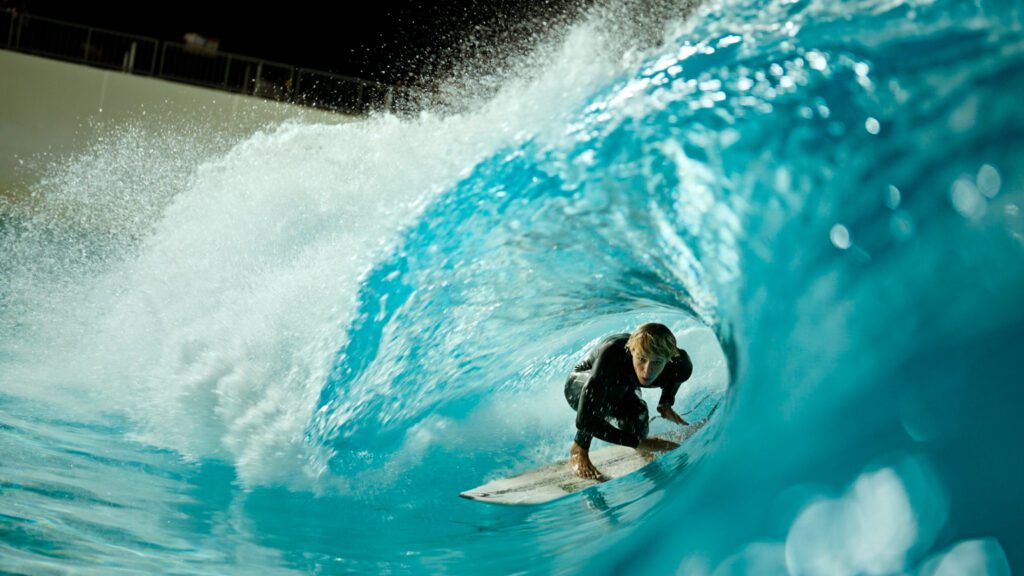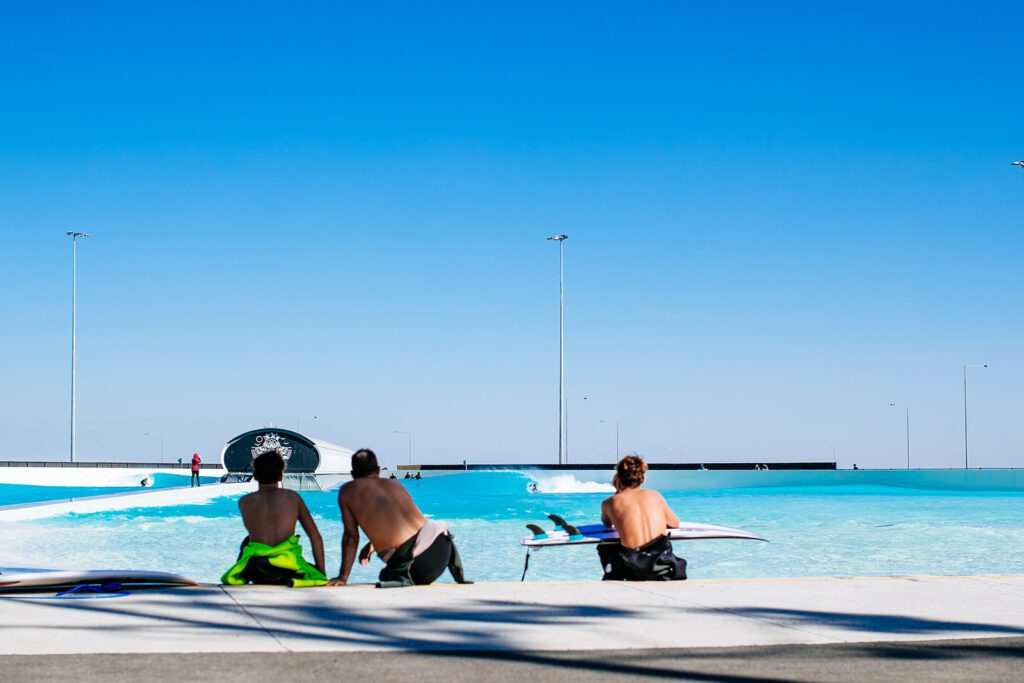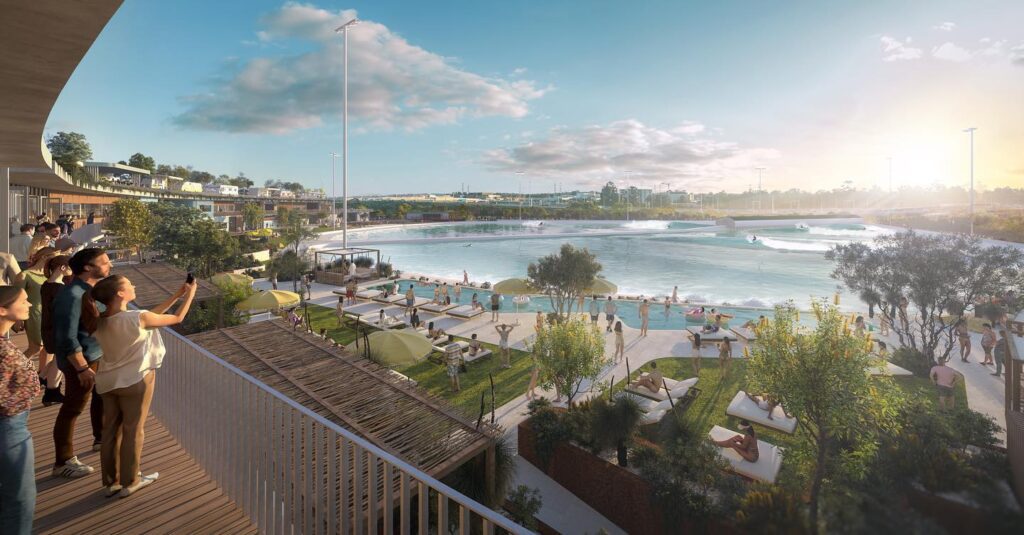What’s It Like Running The Biggest Wave Pool Company In The World?
Wavegarden’s Founder and CEO, Josema Odriozola, calls it how he sees it.
Do you remember, years ago, when footage came out of Wavegarden’s sworn-to-secrecy test center in the Basque Country after CT surfers hit it when the Quik Pro France was in town?
It was very exciting at the time. The waves were perfect, albeit small. However, wavegarden was founded in 2005. In less than ten years, they had a functioning — and quite fun looking pool. And, as we learn below, there was no real market for wave pools at the time.
Fast forward another almost-decade and Wavegarden’s tech is currently used at open-for-biz pools at Alaia Bay in Switzerland, Wave Park in South Korea, Praia da Grama in Brazil, The Wave and Surf Snowdonia in the UK, and URBNSURF in Australia. By 2024, they will also have pools open in Sydney, Scotland, California, as well as another in Brazil.
In the past few weeks, we saw a massive development from Wavegarden. Suddenly — without having to modify the bathymetry or the machinery at the pools — they were able to radically modify their waves. The air sections got the most hype (because who doesn’t love airs?) but this development also allows them to create more barrel and turn sections at all of their venues.
This is a very big deal, and very good news for all of us.
It served as a good reason to have a conversation with Wavegarden’s founder and current CEO, Josema Odriozola. Josema spoke candidly and was kind with his time. Like the rest of us, he simply loves surfing.
Read on.

You started Wavegarden 17 years ago in 2005. What sparked your interest in wave pools?
I’m an industrial engineer by training and I’ve always surfed. I live on a pretty crowded beach in San Sebastian, where there is often a lack of waves. We started wondering if there was a better way to create waves than the existing methods. I didn’t really realize how complicated it would be. There was no market either — we had to create one.
What’s been keeping you excited all this time?
Wave pools make sense. It’s a profitable business model and they create a good experience for surfers. At Wavegarden we create toys so that we can enjoy them. All the employees here use the pools. They let you improve your technique and not have to fight crowds. I’m 50 years old and still improving.
You’ve just rolled out these air sections across all your pools. Can you tell us about the technology behind that?
This improvement is purely software. We have a great application that gives us more freedom to move every panel in each module. It’s a new equation that allows us to create new kinds of waves. The biggest improvement is with air sections, but also we’ve been doing some new barrels and turn waves as well.
How was it seeing these waves tested for the first time?
I was excited and nervous, because I wanted the surfers to be satisfied. Korea was the first location where we unveiled the new wave and we were confident, but there’s always an element of uncertainty. Luke Swanson was invited and you know that if the wave isn’t good enough, he’s not going to be happy.
We knew that we had a lot of options to modify the wave and that’s how we were able to create the one that he liked. We started with smaller waves, then we grew and adjusted the pumping section, the shape of the ramp, and the landing. It was a long process because you need to find the balance between modifying the different factors to adjust to his feedback, while also giving him time to learn the wave.
It took at least nine days of working to get it optimal. We wanted to have another surfer’s feedback, so Victor Bernardo — who had already surfed our waves — came along. It was interesting seeing two surfers interacting together, egging each other on.
Then we went to Melbourne. Korea has 10 modules more than Melbourne and a slightly different bathymetry, so we had to create a new pumping section for Melbourne. Basically, we proved that having 10 less modules was not really a problem. Having more is a little bit better, but only slightly. Actually, because of the bathymetry in Melbourne, we realized the landing was better there — which was great news.
So, is the feedback you’re getting from surfers all verbal?
Yeah, we’re able to change almost everything on the wave in regards to their feedback. For example, we can change how fast the waves are peeling in the lead-up so surfers get the right amount of speed. We can change the steepness — making it more vertical or more flat, faster or slower. We can create a little bit more lip or less lip on the ramp. We can turn the wave against the surfer, and bend it as much as they want.
More bend means more lift. So, you fly higher. With less bend, the lip will take you more to the flats. We also have some ways to control the landing. We can make the ramp bigger or smaller, steeper or flatter.
This may change, but we’ve basically created four kinds of waves. One for straight airs and rotations, one for flips, another for alley oops, and another for training. The training one is a bit smaller and more like a natural ocean wave.
I’m sure this will evolve as more surfers try the waves, but for now we want to see the initial feedback.

Will the air waves be available to the public?
We’ve given the waves to the operators of the parks and they’ll decide how to commercialize them. It looks like the air waves are going to be done in private sessions. I would say it’ll be similar to what happens in Waco where you can rent the facility after or before the public hours.
I hope they do it in a way that’ll be affordable for most of the surfers. I’m sure they’ll find the best way to do it.
You’ve been in this game for a long time. You would have seen lots of technology companies pop up and then fail. Why is it so hard to make a commercially successful technology company in this space?
When you start from the very beginning, you have massive challenges. It takes time to create the right team. When you think about how long it’s taken us to be where we are now, it seems very slow, at least from a business perspective. But, from a technical point of view — if you understand that when we started there was not even a market — it makes sense. We had to create the market. Also, you’re not only creating a wave generator. You need to give the complete surf park to the promoters.
You need to work in a lot of different disciplines. If you don’t do legitimate civil work when you are building the lagoon, or if you don’t have a proper water treatment system, the park will get in trouble.
You need to have mechanical engineers, electrical engineers, civil engineers, water treatment engineers. You also need to have architects. Creating that team and getting the knowledge to deliver a project can easily cost 30 to 40 million dollars. It’s not easy.
Also, successful projects like this require experimentation — but you can’t experiment with a client’s project in their facility. You have to do it by yourself, but having a full-size facility to test is expensive.
Also, waves are powerful. A wave can weigh many tons, like a heavy truck. A pool that will have 2 million waves per year will have 40 million waves in 20 years. That means we need to build it like a highway that will have 40 million trucks passing through.
It’s not a matter of just money. It’s money, time, and knowledge, of course.

It sounds like you have quite a strong company culture. How do you make sure you have the right people working with you?
I would say that’s almost my main job at Wavegarden — making sure that the teams are the best possible in every discipline. You need to find people with motivation, and who are also really good at what they do. It’s a mix between people who have a lot of experience and young people who come with a lot of ideas. It’s also a combination between surfers, and others who aren’t surfers but likely will become surfers by working at Wavegarden.
It’s challenging but it’s very interesting. It’s really satisfying when we see that a team is motivated, is working well, and is creating something. The good thing about Wavegarden is that it offers and demands a lot of creativity. It doesn’t matter what department you’re in, there is always room for creating new things.
If you’re an engineer and you like your profession and you like surfing, then it’s fun.
Both of your kids, Hans and Kai, are really good surfers. Percentage wise, how much of the total time they’ve spent surfing has been in wave pools?
Less than what people think. I would say the pool has helped a little bit. For learning the right body positioning for a barrel, especially when you go backside, the pool is great.
When I work with really high performance surfers, I always ask them to call me back once they’re surfing in the ocean to understand what their feelings are after several days in the pool. Most of them tell me that their success ratio goes up. Everybody has something to learn in the pool.
If I was a super wealthy surfer like Mark Zuckerberg, I’d immediately try to install a wave pool in my backyard. How far off do you think we are from seeing these being privately owned by the mega-wealthy? Is that something you’re interested in?
In the beginning, there were wealthy individuals interested in it. Actually, we have some people we’re preparing projects for. Private condominium facilities will become more common for sure. It’s one of our main business models going forward
I also think that municipalities are going to be more and more interested, and they’re going to start facilitating good pieces of land where a wave park business will be profitable. Hopefully, both our private and public business models will be good in the coming years. The technology has proven itself. Now the different business models will need to be proven in the coming years.
I think that’s when the wave pools are going to start growing really fast. It makes sense. Of course, we need to solve the problem of sustainability. Without solving that, the future is limited. It’s just an engineering problem though.
The energy consumption — at least in our facilities — is low enough to be covered with solar panels. This is not only an environmental strategy, but also a financial one. It can be more profitable than just connecting your facility to the grid.
The water consumption can also be solved if you do the right engineering, so that a Wavegarden doesn’t impact the environment more than any other basic sports facility.
With surfing growing and becoming an Olympic sport, I think it’s going to be more and more common to have facilities like this in every city with a solid population.
Do you ever get bored of talking about surfing?
No. You don’t get bored of surfing. How can you?





Comments
Comments are a Stab Premium feature. Gotta join to talk shop.
Already a member? Sign In
Want to join? Sign Up